Why Privacy-First Companies Choose Canada for Data Storage
Canada is quickly gaining recognition as a strategic data hub for privacy-first companies. With strong privacy laws, stable infrastructure, and global trust, it offers a powerful foundation for businesses that take data protection seriously. Learn how LoginRadius helps you store, migrate, and manage identity data securely, locally, and compliantly.
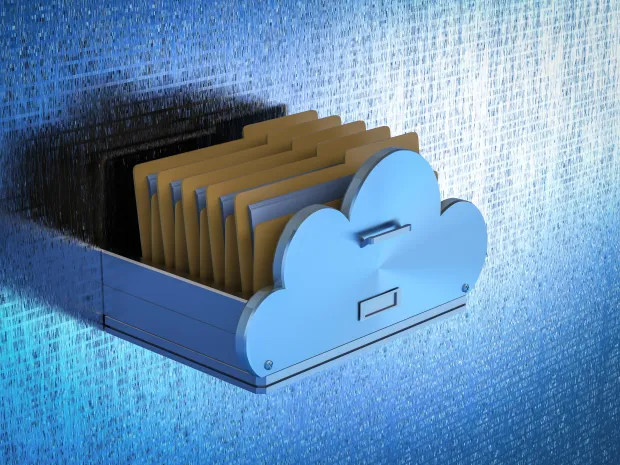
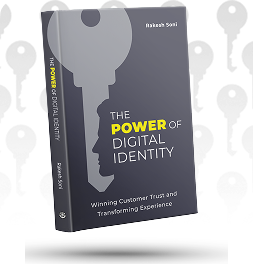
Learn How to Master Digital Trust
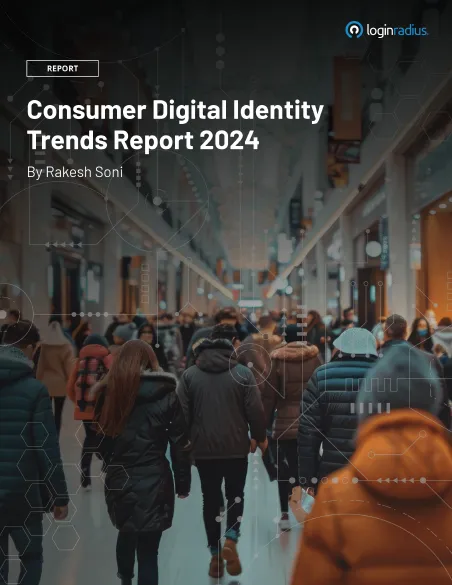
The State of Consumer Digital ID 2024
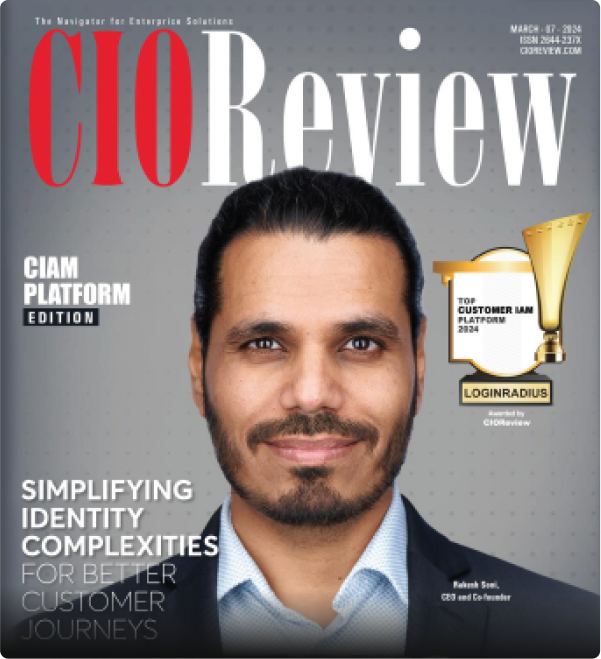
Top CIAM Platform 2024
Introduction
In today’s digital economy, trust in how companies handle data has become a defining competitive advantage. From fast-growing startups to global enterprises, organizations face mounting pressure to demonstrate that they protect consumer privacy, secure personal information, and operate with transparency.
A rising wave of data privacy laws, including the EU’s GDPR, California’s CCPA, and Canada’s PIPEDA, reflects a global mandate: data must be protected, stored responsibly, and governed under the appropriate legal jurisdiction.
As compliance evolves from a checkbox requirement to a business-critical function, businesses are adopting a fundamentally privacy-first approach to data storage and governance. This means going beyond vague regional assurances and building systems that prioritize data minimization, enforce user rights, and ensure lawful processing and localized storage across jurisdictions.
Increasingly, companies are asking, "Where exactly is our customer data stored?" How is it transferred across borders? Are we fully compliant with regional and international laws?
This shift has propelled data residency, cross-border data transfer regulations, and data sovereignty to the forefront of IT, legal, and risk management strategies.
Against this backdrop, Canada has become one of the most attractive and strategically sound destinations for storing data with a focus on privacy.
With globally respected privacy and data protection laws, a highly stable political and regulatory environment, and a growing ecosystem of state-of-the-art data centers, Canada offers a unique blend of legal credibility and operational readiness for businesses operating in regulated and data-sensitive industries. Let’s understand in detail.
The Growing Need for Privacy-First Data Storage
There is a fundamental shift underway in how modern businesses think about data, not just how it’s used, but where it resides, who can access it, and under what legal jurisdiction. Storing customer data is no longer a backend decision made in isolation. It’s a strategic, cross-functional priority tied to regulatory risk, brand reputation, and user trust.

In a world where consumers are more privacy-aware and regulations are more unforgiving, the critical question is evolving. It’s no longer simply “Can we store this data?” Should we? And if yes, where? And How?
Organizations that proactively embrace privacy-first principles don’t just stay compliant—they build long-term credibility and consumer confidence. Marketing, product, and security teams now all play a role in communicating and delivering on these privacy promises.
Data Storage Is No Longer Just a Technical Concern
Traditionally, storage choices were based on practical metrics: server uptime, cost per GB, latency, and redundancy. And to be fair, those factors still matter. But now, storage decisions also carry legal, ethical, and customer-facing weight.
You’re not just storing files or metadata. You’re holding people’s personal information—names, emails, behaviors, preferences, sometimes even health and financial details. That data is governed by regional privacy laws that require you to handle it responsibly, transparently, and within defined borders.
That means every decision—from which region your cloud instance uses, to how long you retain user logs—now has compliance implications. As organizations grow, they need infrastructure that doesn’t just meet these regulatory demands but also scales securely and efficiently.
Platforms like LoginRadius are architected to support this balance, with a strong focus on handling scalability and security in tandem, making privacy-first storage both practical and future-ready.
Privacy Laws Are Setting the Tone Globally
Whether it’s GDPR in the EU, CCPA in California, or PIPEDA in Canada, the direction is clear: regulators want data to be collected minimally, stored regionally, processed lawfully, and deleted when no longer needed.
That’s not theory—it’s enforceable. Companies have already faced multi-million-dollar penalties for mishandling personal data. More importantly, they’ve suffered lasting damage to public trust, which is far harder to rebuild than to preserve.
These laws are also becoming more harmonized and far-reaching. Even if your business isn’t physically located in one of these regions, the moment you handle personal data from a resident, you’re subject to their regulatory standards. That’s why building for global compliance from day one is no longer just best practice—it’s essential.
To support this, modern platforms like LoginRadius offer built-in frameworks for security and compliance that align with the world’s leading data protection laws, helping businesses operate confidently and compliantly across borders.
Want to understand how privacy-first infrastructure fuels trust and loyalty? Download this insightful resource:
The Real-World Cost of Getting It Wrong
It is easy to think of compliance as a legal checklist. But in reality, privacy lapses show up in tangible, painful ways:
-
A delay in closing a key enterprise deal because your storage policy didn’t meet the client’s data residency requirements.
-
Weeks of engineering time were lost responding to DSARs (Data Subject Access Requests) because there’s no automated way to find or delete customer data.
-
A public relations crisis because data was stored in a country that allows excessive government surveillance, without informing users.
-
A sudden regulatory audit requires your team to provide proof of data minimization, retention policies, and practices for cross-border transfers.
These aren’t edge cases. They’re becoming the norm for growing companies.
Privacy-First isn’t Just Good Ethics—It’s Smart Business
Interestingly, the companies that get this right aren’t just avoiding risk, but they’re also creating competitive advantages.
By adopting privacy-first storage models where you store only what’s necessary, keep it local when required, and build user-facing controls, you make it easier to:
-
Enter new markets without legal uncertainty
-
Build customer trust through transparency
-
Close larger deals faster by proving compliance
-
Align with modern procurement and security standards.
It is not about slowing down innovation. It is about giving your business the foundation to grow without having to stop and fix privacy gaps later.
Customers Care, Too—More Than Ever
We can’t ignore the human side. People are more aware than ever of how their data is used. They’ve seen stories of misuse, abuse, and silent tracking. And they’re asking smarter questions:
-
“Where is my data stored?”
-
“Who has access to it?”
-
“Can I delete it if I change my mind?”
-
“Do I need to worry about this company selling or sharing it behind the scenes?”
If your answer is “we’re not sure,” that’s a problem. If your answer is “we’ve thought about that and built for it,” that’s a brand differentiator.
Privacy-first data storage makes your company easier to trust—and that trust shows up in metrics: retention, referrals, NPS, and growth.
It's Easier to Build for Privacy Than to Bolt It On Later
Ask any engineer or compliance lead who’s had to retrofit privacy into an existing system: it’s painful. Manually deleting user data from multiple systems. Untangling logs that were never supposed to be stored. Trying to create jurisdictional separation after the fact.
Privacy-First Is No Longer Optional. It’s the New Uptime.
In today’s digital economy, privacy-first storage is as fundamental as system availability and security. It’s not an afterthought or future upgrade—it’s a baseline expectation, hardwired into how modern digital services are evaluated by users and regulators alike.
For companies operating in data-intensive industries like SaaS, fintech, healthcare, or media, the real question isn’t should you embrace privacy-first design—it’s how fast you can implement it, and how well your infrastructure can scale to support it.
Just like uptime used to be the gold standard of reliability, privacy has become the new benchmark of trust. Customers want assurance that their data is handled ethically, stored locally when required, and protected at every step.

This is exactly how LoginRadius approaches privacy and performance—with a globally distributed data center architecture, purpose-built for compliance, scalability, and 99.99% uptime. It’s not just about staying online; it’s about staying trustworthy.
Why Canada? Strategic Advantages for Privacy-Focused Organizations
Choosing where to store customer data has never been a more strategic decision. It’s not just about finding cloud infrastructure with low latency or high availability; it’s about aligning with privacy laws, reducing compliance friction, and showing your users that their data is being treated with care and respect. That’s where Canada quietly stands out. Let’s understand in detail.
A Legal Framework That Aligns with Global Expectations
At the heart of Canada’s privacy posture is PIPEDA (Personal Information Protection and Electronic Documents Act). It’s been around for over two decades and aligns closely with international regulations like the GDPR, making it one of the more globally compatible data protection laws.
For businesses operating across North America and Europe, this makes Canada an efficient and strategic data hub. You don’t need to reinvent your compliance model. If your systems are already structured to meet GDPR or CCPA requirements, expanding or migrating operations into Canada often means fewer legal gaps—and a stronger global compliance posture.
Unlike regions where privacy regulations are still evolving or politically unstable, Canada offers a predictable and transparent legal framework. That kind of consistency is invaluable for long-term infrastructure planning, especially when compliance is directly tied to your go-to-market speed.
Platforms like LoginRadius are purpose-built to operate within these frameworks, offering region-aware identity storage and privacy-first architecture designed to support organizations subject to PIPEDA, GDPR, and beyond.
A Climate of Digital Trust and Political Stability
In a world where geopolitical tensions are raising questions about data access and surveillance, Canada offers something rare: consistency and neutrality.
It’s widely viewed as a country that respects individual rights, protects civil liberties, and takes privacy seriously—not just in law, but in culture. When customers know their data is stored in a country with a reputation for upholding digital rights, they’re more likely to trust your brand.
A Rapidly Expanding Data Infrastructure
Beyond legal alignment, Canada has made serious moves on the infrastructure front. Over the past few years, there has been a sharp increase in the number of modern, enterprise-grade data centers going live across provinces such as Ontario, Quebec, Alberta, and British Columbia.
These aren’t just co-location warehouses—they’re highly secure, redundant, and scalable environments built to meet the demands of industries like finance, healthcare, and government. That means you don’t need to choose between compliance and performance—you can have both.
A Nation Investing in Digital Sovereignty
Canada isn’t just checking boxes; it’s actively building for the future. From federal investments in national cybersecurity infrastructure to public-private partnerships on AI governance and cloud modernization, a clear national effort is underway to strengthen digital independence.
What this means for your business is simple: storing data in Canada isn’t a short-term workaround. It’s a future-proofed decision that aligns with where global data governance is headed—toward more localized control, stricter rules for cross-border data transfers, and transparency in data handling practices.
How LoginRadius Helps You Build Privacy-First, Compliant Infrastructure
Choosing the right region to store your data is a smart first step, but it’s only part of the picture. What really matters is how that data is managed, protected, and governed once it’s inside your system.
That’s exactly where LoginRadius comes in. We’ve built a customer identity platform that doesn’t just handle authentication and user management—it helps you bake privacy, compliance, and control into your architecture from day one.
Migrate Identity Data Securely Without Compromising Compliance
Moving customer identity data from one region or vendor to another is no small task, especially if you're subject to regulations like PIPEDA, GDPR, or HIPAA. And if something goes wrong during migration? You’re not just risking uptime, you’re risking legal exposure and user trust.
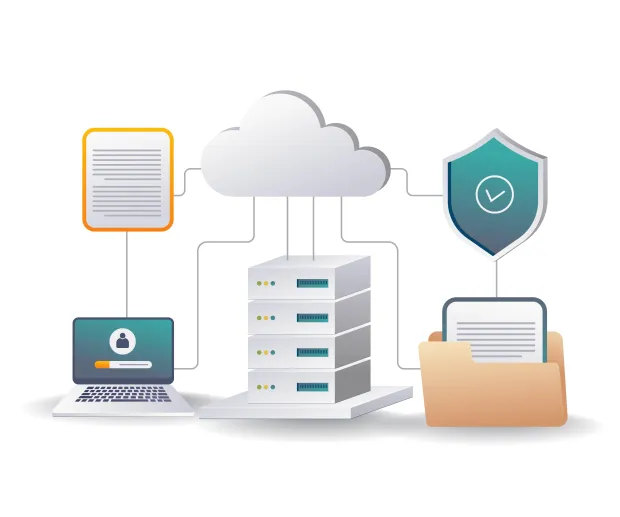
That’s why LoginRadius offers dedicated migration docs designed to keep your data secure and compliant during every step of the move. It gives you:
-
Encryption while the data is stored and when it’s being transferred
-
Audit logs so you can track every step
-
Options for staged rollouts, so you can test safely before going live
-
Built-in alignment with major privacy laws like PIPEDA and GDPR
Whether you’re rebuilding your system, combining multiple accounts, or moving data into Canada for local residency compliance, our toolkit makes migration predictable, secure, and low-risk.
Pick the Data Region That Fits Your Compliance Needs
Whether you're operating in Canada, the EU, or APAC, being able to choose where your identity data lives matters more than ever.
With LoginRadius, you can configure your preferred data region during setup, ensuring that user data stays inside the borders you choose. This flexibility helps you:
-
Comply with data sovereignty laws
-
Avoid unnecessary cross-border data transfers
-
Simplify your internal audits and external disclosures.
You don’t have to work around a generic, global infrastructure. You get to architect for compliance from the start.
Built-In Support for Data Minimization and User Rights
Let’s face it, managing privacy requirements like consent tracking, right to erasure, and data minimization can be a massive lift if you're building from scratch.
Out of the box, you get:
-
Fine-grained control over what data is collected (no need to over-collect)
-
APIs for managing user consent and preferences
-
Native support for access, deletion, and rectification requests
Everything is documented in our Identity Data Compliance guide, so your legal and engineering teams can stay in sync without needing weeks of back-and-forth.
Lock Down Access With IP Whitelisting
Security isn’t just about storing data in the right place; it’s about controlling who can reach it.
LoginRadius provides IP allowlisting, which lets you:
-
Restrict access to identity endpoints by IP
-
Create safe zones for admin and backend operations
-
Reduce risk from bots, bad actors, and accidental exposure
This gives you perimeter-level control without complicating your deployment.
Real Tools. Real Compliance. No Hacky Workarounds.
Too often, identity systems force devs into trade-offs: flexibility vs. compliance, speed vs. privacy. We built LoginRadius to avoid that. You get developer-friendly APIs and modern architecture, without cutting corners on privacy or data security.
In short, LoginRadius helps you:
-
Store data where it belongs
-
Handle identity data responsibly
-
Prove compliance when needed
-
Keep your infrastructure lean and maintainable.
Because today, trust is part of your architecture, and we’re here to help you build it. Need help to safeguard your customers in the Canadian market, download this insightful resource:
Realizing Privacy, Trust, and Business Resilience
In a digital world shaped by rapid innovation and even faster regulation, companies that lead with privacy-first principles aren’t just more secure—they’re more agile, more scalable, and more trusted by their customers.
Let’s be real: privacy and compliance aren’t just about ticking boxes anymore, but they’re about how your users experience your brand and how your infrastructure holds up under pressure.
When you treat data protection as a core design principle (not an afterthought), you don’t just stay on the right side of regulation—you build a better, more future-ready business.
Privacy Is the Architecture of Trust
Your customers may never see your infrastructure, but they feel its effects. When you collect only what’s needed, store data close to home, and make privacy controls easy to use, customers notice. And when they know you’ve taken the time to protect their information at every layer—from signup to storage—they’re far more likely to stay.
This is especially true in sectors like finance, health, and education, where user data isn’t just personal—it’s sensitive. One breach, misstep, or mishandled request can fracture hard-earned trust overnight.
With LoginRadius, trust-building becomes systemic. You’re able to:
-
Respect regional privacy laws without operational gymnastics
-
Handle data residency requests with configuration, not custom code
-
Prove to users that they’re in control of their own data
Real-world adoption backs this up. For instance, BroadcastMed—a trusted healthcare media platform—used LoginRadius to implement HIPAA-compliant, OTP-secured identity workflows, ensuring user data was managed with care and regulatory precision. Similarly, Swann, a leader in consumer security products, leveraged LoginRadius to provide a seamless, privacy-first login experience for global customers during onboarding and transactions.
This level of transparency and control isn’t just a compliance win—it’s what modern digital trust looks like.
Business Resilience Is Built on Regulatory Readiness
Every year, data laws evolve—and with them, the operational burden of staying compliant. Organizations that treat privacy reactively often find themselves retrofitting controls, rewriting policy, and reconfiguring infrastructure under pressure. Not only is this expensive, but it’s disruptive pulling product, engineering, legal, and IT into a sprint they didn’t plan for.
But with privacy-first infrastructure:
-
You’re already prepared for new localization mandates
-
You can respond to legal changes with minimal rework
-
Your systems are built to flex, not break, under scrutiny
This makes your business not just more secure, but more resilient in the face of change.
And in a world where regulatory complexity is increasing, that resilience is a strategic asset.
Privacy as a Deal Accelerator—Not a Delay
If you’ve ever been deep into a sales conversation with an enterprise buyer, you know what happens: the deal slows down when the legal and data security teams get involved.
They want documentation. Proof of compliance. Clear answers to:
-
Where is data stored?
-
Is it segmented by region?
-
How is consent captured?
-
What happens if a user requests deletion?
If your team can’t answer those questions quickly—or if the answers involve workaround-heavy solutions—your deal stalls, or worse, dies.
But with LoginRadius powering your identity and data infrastructure:
-
You already have answers aligned with major privacy frameworks
-
You can tailor responses based on region or vertical
-
You build confidence with buyers before the pen hits paper
In this way, privacy-first design becomes a revenue enabler, not a blocker.
Internal Efficiency: Privacy-First = Developer-Friendly
Privacy and compliance are often perceived as a tax on engineering velocity. But when built into your architecture, they actually save your team time.
With LoginRadius, your developers don’t have to:
-
Manually enforce region-specific data policies
-
Build separate consent frameworks for each product
-
Retroactively delete scattered data when a user asks to leave
Instead, they work within a platform that:
-
Has built-in data minimization and retention logic
-
Lets you enforce region-aware processing
-
Logs and audits actions in ways that satisfy compliance teams
The result? Fewer privacy fire drills, faster releases, and cleaner internal collaboration between product, legal, security, and engineering. Read our complete developer documentation here.
A Reputation for Privacy Is a Reputation Worth Having
In today’s competitive landscape, brand is more than visuals or copy—it’s your behavior.
When users search for alternatives, the question isn’t just “who has the most features?”
It’s also:
-
“Which product treats my data responsibly?”
-
“Which platform is safe for my customers or employees?”
-
“Which vendor will still be trustworthy two years from now?”
Companies that embrace privacy not just as a legal requirement, but as a brand pillar, differentiate themselves in a saturated market. It’s a stance that attracts not just users, but talent, partners, and media goodwill.
Unlike features, which can be copied, trust can’t be cloned.
It All Adds Up : Privacy Enables Growth, Not Just Compliance
Let’s tie it all together. What does a privacy-first foundation actually give you?
-
Flexibility to operate in multiple regions
-
Confidence in enterprise sales cycles
-
Easier scaling into regulated markets
-
Smoother internal processes
-
More trust from users
-
Less exposure to legal or reputational risk
Privacy-first infrastructure isn’t just about reducing risk, it’s about increasing what your business is capable of doing. It’s about resilience in uncertain times. Speed when markets shift. Trust when competition heats up.
And when all of that is powered by a platform like LoginRadius—designed for privacy, built for developers—you get more than peace of mind. You get a competitive advantage you can actually build on.
Trust Isn’t Just Earned-It’s Engineered
Your users care about where their data goes. They notice when things are transparent and respectful, and they definitely notice when they’re not.
By giving users more visibility and control over their data (consent flows, data access, and deletion options), you’re not just meeting compliance expectations; you're showing users that they’re more than just rows in a database. That builds trust, and trust is what drives long-term retention.
With LoginRadius, features like user-managed preferences, regional data storage, and clean audit trails make it easier to be the company that does privacy right. Here’s s a global view of LoginRadius data centers:
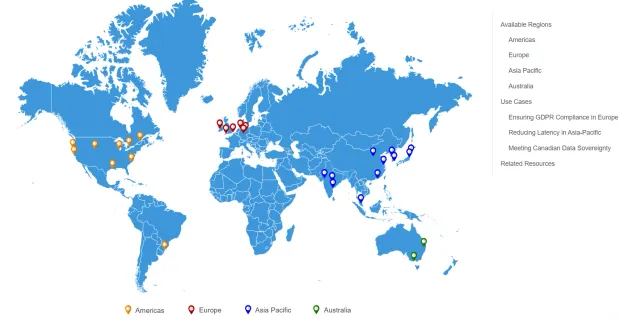
Resilience Starts with the Right Architecture
Today’s digital services need to be globally accessible, always available, and secure by default. That’s a hard balance to strike if you’re working around limitations like hardcoded infrastructure, vague residency policies, or patchwork compliance tooling.
By choosing regional data centers (such as Canada, the EU, or APAC) and implementing controls like IP restrictions and data minimization, you’re building more than just an app; you’re building infrastructure that can handle audits, scale globally, and withstand real-world threats.
LoginRadius gives you the flexibility to design around modern needs, from performance and localization to regulatory compliance.
Conclusion
In today’s privacy-driven world, where regulations are tightening and user expectations are rising, data storage is no longer just a technical decision—it’s a reflection of your brand’s values.
Storing data responsibly, respecting regional laws, and giving users control isn’t just about compliance—it’s about building lasting trust.
If your business is scaling and you’re ready to make privacy a foundational part of your infrastructure, contact the LoginRadius team to see how we can help you build trust, stay compliant, and grow without compromise.

Featured Posts
Cybersecurity Awareness Month 2025: Why Businesses Can’t Afford to Look Away
Secure Customer Experiences with Phone Authentication: Why Mobile Matters
Best Descope CIAM Alternatives in 2025
Passwordless Login: Technical Workflows, Business ROI, and Regional Adoption
Top 10 Frontegg Alternatives to Consider in 2025
Identity and Access Management in Banking: Why It’s Crucial for Security and Customer Experience
Top 10 FusionAuth Alternatives in 2025
Unlocking Secure Digital Experiences with Authorization as a Service
CIAM Platform Integrations: The Key to a Strong Customer Identity Strategy
Email is Hacked! 7 Immediate Steps to Follow
Data Governance in Healthcare: Best Practices & Future Trends
Why Social Login is a Game-Changer for eCommerce Login
Top WordPress Social Plugin Picks for Seamless Logins
Why Privacy-First Companies Choose Canada for Data Storage
Top Auth0 Alternatives for 2025: Simpler, Faster, and More Flexible CIAM Options
What Are Digital Certificates and How Do They Secure the Web
Why Hosting Your CIAM Solution in a Canadian Data Center Gives You the Edge
B2B IAM vs Workforce IAM: What Enterprises Must Know
Access Control in Security: What It Is and Why It Matters
The Making of The Power of Digital Identity: A Candid Interview with Rakesh Soni
What is Certificate-Based Authentication and Why It’s Used
6 Key Ecommerce Challenges in 2025 (And How CIAM Solves Them)
B2B vs B2C Authentication- A Quick Guide
Password Best Practices for Stronger Security
Building Community Beyond Borders: Our Thailand Story
1FA vs 2FA vs MFA: Which Method Secures You Best?
B2B IAM Best Practices and Architecture Guide
Adding Partner IAM With LoginRadius: A Complete Guide to B2B Identity Management
What is User Authentication, and Why is it Important?
What is Partner IAM / B2B IAM - A Complete Guide
Still Bending Workforce IAM for Your B2B Networks? Introducing LoginRadius Partner IAM—Built from the Ground Up
What is Biometric Authentication and How It's Changing Login
Location-Based Data Residency Boosts Trust and Conversions
The Impact of AI on Cybersecurity
PINs vs Passwords: Which is More Secure?
Why Global Businesses Trust Canada for Data Hosting Services
Passkeys vs Passwords: The Upgrade Your Security Needs
What is the Best Way to Authenticate Users?
Canada as a Global Hub for Privacy-First CIAM Platforms
How to Choose a Strong Password- A Quick Guide
A Complete Guide to Device Authentication Methods
What is a One-Time Password (OTP) ? – A Complete Guide
A Quick Guide to Username and Password Authentication
Types of Authentication and Identity Verification
What is Strong Authentication in Cybersecurity?
Top 9 User Authentication Methods to Stay Secure in 2025
Authentication vs Authorization: What's the Difference?
Guide to Authentication Methods & Choosing the Right One
Identification and Authentication: A Quick Comparison
Understanding Authentication, Authorization, and Encryption
Introducing the LoginRadius Trust Center: Always Up-to-Date and at Your Fingertips
What is Token Authentication and How Does It Work?
What is OTP Authentication and How Does it Work?
What is Role-Based Access Control (RBAC)?
LoginRadius Launches Next-Generation CIAM Console: Self-Serve, No-Code, and Built for Speed
Quick Guide to Single-factor, Two-factor, and Multi-factor Authentication
Democratizing Authentication: Introducing LoginRadius' Free Forever Developer Plan
Mobile Authentication: Everything You Need to Know
What is Push Notification Authentication and How It Works?
Code Less, Build More: Unveiling LoginRadius' AI-Powered Developer Documentation
Types of Multi Factor Authentication & How to Pick the Best
Risk-Based Authentication vs. MFA: Key Differences Explained
Revamped & Ready: Introducing the New Developer-First LoginRadius Website
What is SCIM? A Developer's Guide to Understanding and Using SCIM
RBAC vs ABAC: A Developer’s Guide to Choosing the Right Fit
CISOs’ Top Cybersecurity Threats 2025: Scattered Spider, Deepfakes, and More
LoginRadius 2024: A Year of CIAM Innovations
What is Passkey Authentication - A Complete Guide
How AI-Enabled Cybersecurity Solutions Are Strengthening Our Online Security
What is Identity Orchestration
LoginRadius Releases 2024 Consumer Identity Report, Highlights the Shifting Trends in Consumer Preferences
Celebrating 8th Year Milestone: How Our Collaboration with a Leading Healthcare Company Transformed Millions of Lives
Unlock Your Digital Freedom: How Automating Passwordless Authentication Can Transform Your Security
How To Secure GenAI by Implementing RBAC In The Enterprise
The Hidden Pitfalls: Why Most CIAM Systems Fail Under Pressure
No More Login Hassles: Effortless Migration to LoginRadius Awaits
How Cookie Management Supports GDPR and CCPA Compliance
LoginRadius Launches Identity Orchestration for Seamless Identity Workflows
Passkeys: Unlocking Benefits for a Better Online Shopping Experience
AI and the Changing Face of Enterprise Security Threats
Leading the Charge in Customer IAM: LoginRadius Recognized as an Overall Leader by KuppingerCole
Gearing Up for Better Customer Experiences? Choose No-Code Identity Orchestration
Announcement - LoginRadius Launches PassKeys to Redefine Authentication Security and User Experience
Decoding the Rise of Zero-Trust Adoption in Government Sector
Say Goodbye to Passwords: How Passkeys Are Reinventing Online Security
Announcement - LoginRadius Unveils the Future of Authentication with Push Notification MFA
Is Your CIAM Adapting to Global Needs? 6 Key Areas to Win Privacy-Concerned Customers
The Growing Threat of Identity-Based Attacks and the Need for an Advanced Identity Security Approach
How AI Is Changing the Game in User Authentication
eIDAS 2.0: The Digital Revolution Is Here – Is Your Business Ready to Comply?
A Quick Guide To Choosing The Right Zero Trust Vendor
Cloud Security Governance: Protecting Assets in the Digital Frontier
What is Silver SAML Vulnerability and How Can We Protect Our Digital Identities?
Identity Security for Device Trust: Navigating 2024 & Beyond
Exciting Leadership Updates Amid Strategic Growth at LoginRadius
From Past to Present: User Authentication's Evolution and Challenges
How Does Multi-Tenancy in Customer IAM Solutions Boost Security?
How No/Low Code CIAM Balances Security and User Engagement?
Beyond Passwords: Navigating Tomorrow's Authentication Landscape
How does identity management address the top 5 security challenges in B2B SaaS?
Reinforcing Security with Advanced Risk-Based Authentication in 2024 & Beyond
2FA vs MFA: Understanding the Differences
Okta Token Theft Implicated in Cloudflare's Security Breach
Voice OTP by LoginRadius: Revolutionizing Secure and Seamless User Authentication
Which is Safer: Biometric or Password?
7 Reasons to Use Biometric Authentication for Multi-Factor Authentication
Exploring Digital Identity Verification with Effective Crucial Data Checks
5 Reasons Why LoginRadius Leads the Way in the CIAM Landscape in 2024 & Beyond
Above the Horizon: Exploring the Power of a Strong Cloud Identity Platform
Streamlining Authentication: Elevate User Experience with LoginRadius AutoLookup
A Journey Through Our Top 10 Blogs from 2023
Now and Beyond- Staying Ahead with the 10 Key Cybersecurity Trends of 2024
B2B SaaS SSO Login: Exploring Enterprise Considerations in 2024
Securing Corporate Applications: A Comprehensive Guide to Enterprise Application Security
Strengthening Security Measures: The Role of Two-Factor Authentication (2FA)
Securing the Throne: Privileged Access Management (PAM) Best Practices Unveiled
7 Common Authentication Vulnerabilities to Steer Clear of
What is Identity Lifecycle Management?
Strengthening Security and Compliance: The Role of Identity Governance
Understanding the Okta Hack: Breach in Customer Support and Lessons for Organizations
Managing Generative AI Security Risks in the Enterprise- A Quick Guide
Empowering Your Security: Exploring the Advantages of Time-Based One-Time Passwords (TOTP)
The Future of Personalization: Embracing Zero-Party Data
Comprehensive Guide to Flexible CIAM Deployment Options with LoginRadius
Small Steps, Big Shields: Navigating Cybersecurity Awareness Month 2023 Safely
Streamlining Access with Converged Identity Platforms
How Retailers Can Balance Privacy While Foiling Thieves
The Power of No-code Customer IAM in Reducing Churn
CIAM: Enhancing Security & Building Consumer Trust-All At Once
Maintaining Trust: Customer Identity Verification Challenges & Best Practices
Unlocking Smartphone Security: How to Hackproof Your Smartphone
Phishing-Resistant MFA Login for Mobile Applications: Strategies and Challenges
True Passwordless Authentication: Stronger Defense Against Cyberattacks
Identity Governance vs. Identity Management: Navigating the Differences
Navigating Identity Verification Challenges in Regulated Industries: 7 Effective Solutions
Enhancing Security: Leveraging 5 Real-Time Techniques to Detect Phishing Attacks
A Comprehensive Guide to the Five A's of Cloud Identity Management
Understanding the Difference Between Identity Access Management On-Premise and Cloud
Learn the Impact of Identity Theft on Businesses in 2023
LDAP Authentication: Meaning and How it Works?
7 Things Your Security Team Need To Know Before Creating A CIAM Strategy
Choosing Between Self-Managed and Service-Based SSO Solutions: A Comprehensive Comparison
What is Cloud Identity and its Benefits?
The Legal Implications of SSO: Privacy, Security, and Compliance
Data Privacy Laws for 2023: A Closer Look at 9 Key Regulations
4 Reasons Why SSO Integrations Are a Must-Have For Online Businesses
Consumer vs. Enterprise: Navigating the Dual Nature of Digital Identity
LoginRadius Releases Consumer Identity Trend Report 2023, Highlights The Future of Customer Identity
What is a Password Vault and How Does it Work?
How a Culture of Identity Governance Empowers Digital Transformation?
Securing the Digital Frontier: The Power of AI in Next-Gen CIAM
Replatforming 101: Everything You Need to Know
Best Practices for Username and Password Authentication
The Ultimate Guide to Choosing the Right CIAM Solution
How to Use Identity Management at Every Stage of the Customer Journey?
Protecting Your Cloud Data: The Power of SaaS Security and IAM Governance
The Rise of Account Creation Fraud: What You Need to Know
Why Direct-to-Consumer (D2C) Businesses Must Take A Strategic Approach To CIAM?
What are Self-Sovereign Identities?
7 Uncommon Cyber Attacks in 2023: Why Your Organization Needs To Be Ready For The Worst-Case Scenarios
Identity Modernization: What Is It & Why Should You Care?
A Lot Can Happen In The Cloud: Multi-Cloud Environment and its Optimization Challenges
Can Security and User Experience Co-Exist in the Authenticating and Authorizing Space?
Business On The Move: How Just-in-Time Migrations Are Making Smooth CIAM Transitions
3 Digital Onboarding Trends To Watch In 2023 (And What You Can Do About It Now)
6 Tips to Prevent Accidental Data Exposure Within Your Company
Top Priorities for Customer IAM Leaders in 2023 and How to Prepare
Electronic Theatre Controls: A LoginRadius Customer Success Story
Distributed Multi-Cloud Identity Management and Its Endless Business Benefits
How The Age Of Smart Credentials Is Rewriting The Rules For Physical Verification?
Incident Response Vs. Disaster Recovery: What’s The Difference and Which Do You Need?
The Customer Experience is About to Get Even Better With Passive Authentication
What is Dynamic Authorization & Why Does it Matter?
What’s the Difference Between Attack Surface and Attack Vector?
How Identity-Based Access Ensures Robust Infrastructure Security Amidst the Growing Identity Crisis?
2FA Bypass Attacks- Everything You Should Know
IAM vs. Customer IAM: Understanding the Role of CIAM in Accelerating Business Growth
Why MFA Fatigue Attacks May Soon Be Your Worst Nightmare?
InfoSec Director, Alok Patidar Answers Your Most Difficult Questions on Cybersecurity
Understanding MITRE ATT&CK Framework?
Identity Fabric vs. Zero Trust: Is One a Better Alternative Than The Other?
The Role of Customer Identity Management in IoT Security: How It's a Must!
Securing Centralized Access Without Compromising User Experience
User Authentication in the Metaverse: What’s Changing?
LoginRadius Pledges To Raise Awareness This Cybersecurity Month
Public Cloud Risks - Is Your Organization Prepared for Cloud Threats?
What Brands Need to Know for Building the Future of Data Compliance?
Okta Identity Credentials on the Radar of Oktapus Phishing Campaign
BC Municipality Digitizes its Citizen Services. LoginRadius Brings Identity to the Table.
The Role of Customer Authentication in Paving the Way for Digital Agility
What Brands Need to Know for Building the Future of Data Compliance?
6 Alternative Authentication Methods For Your Online Customers
Implementing Zero Trust? Make Sure You're Doing It Correctly
What is Federated SSO (Single Sign-On)?
MFA Prompt Bombing: Is it a New Threat Vector to Worry About?
Privacy-Centric Enhancements: CEO Rakesh Soni Shares His Thoughts on Shifting Data Strategies
The Role of Identity Management in Securing Your Citizen’s Data
Why is Data Privacy an Immediate Enterprise Priority?
What is Out-of-Band Authentication?
How Can Enterprises Use SSO to Boost Data Collection?
Why Your Business Needs A Simple Passwordless Experience (Minus the User Friction)
Will Apple’s ‘Lockdown Mode’ Reduce State-Sponsored Attacks?
Authentication, Identity Verification, and Identification: What's the Difference
IoT Botnet Attacks: Are They the Next Big Threat to Enterprises?
Skiperformance - a LoginRadius Customer Success Story
Cross-Device Authentication and Tracking: The Opportunities and Underlying Privacy Risks
How Identity Modernization Will Thrive Business Success in 2022 and Beyond
The Pros & Cons of Reusable Digital Identity: What You Need To Know
What is Cloud Security and How it Works?
Age of No-Code Technologies: Identification and Authentication
SSO vs. Social Login: What’s the Difference? [Infographic]
Planning a Digital Makeover For Your Business? LoginRadius CIAM Can Help!
What is Cloud Computing?
Authentication vs Login - What’s the Difference?
How a Simple Password Reset Can Ruin Your Customer's Experience
GovTech is On The Rise: How Can This Technology Improve Government Services?
5 Access Management Best Practices and Benefits For Businesses
LoginRadius Releases Consumer Identity Trend Report 2022, Key Login Methods Highlighted
BITB Attacks: The New Destructive Phishing Technique
5 Reasons Why You Need to Strengthen Your Identity Authentication
What is the Difference Between MFA vs. SSO?
What is Login Authentication?
5 Ways to Improve Your Customer Verification Process
5 Myths About Phishing You Should Know
4 Common Security Issues Found In Password-Based Login
Personal Information and PII - What’s the Difference?
OTT Platforms and CIAM: How Identity Management Ensures Millions of Viewers to Scale with Ease
Is the Rise of Machine Identity Posing a Threat to Enterprise Security?
LoginRadius Integrates Search in Navigation for Better Customer Experience
5 Privacy Threats in Social Media You Should Know in 2022
Importance of Multi-factor Authentication for SSO
How LoginRadius Creates a Perfect Harmony of UX and Security
Smart Cities and Cyber Security Trends to Watch Out in 2022
Harry Rosen, a LoginRadius Customer Success Story
Top 7 Security Tips from LoginRadius’ Cybersecurity Expert to Follow in 2023
Top 7 Security Tips from LoginRadius’ Cybersecurity Expert to Follow in 2023
This Is How Scammers Get Your Email Address & How to Stop Them
Will Decentralized Auth Change the Perception of Consumer Identities in 2022?
Emerging Threat of Deepfakes: How To Identify And Prepare Against It
Everything You Need to Know Before Buying Cyber Insurance in 2022
5 Challenges for Government Adoption of Citizens’ Access Control
Are You Thinking of Token Management for Your API Product? Think about JWT!
LoginRadius Launches M2M Authorization for Seamless Business Operations
LoginRadius Offers PerfectMind Integration for a Seamless UX
Take Control of Your CIAM Environment with LoginRadius' Private Cloud
10 Tips From CIAM Experts to Reduce the Attack Surface of User Authentication
How LoginRadius Webhook Allows You to Sync Your Data in Real-Time
Federated Identity Management vs. SSO: What's The Difference?
How to Evaluate the Quality of Your User Authentication System
How LoginRadius Offers Customer-Centric Capabilities that Drive ROI
3 Best Stages of IT Security for Implementing Gartner's CARTA
How to Choose the Right User Authentication Option for your Product
An Introduction to Financial-Grade API (FAPI) for Open Banking
Why is PKI The Future of Secure Communications
How to Find the Right SSO Strategy that Fits Your Business
Cybersecurity Best Practices for Businesses in 2023 & Beyond [Infographic]
SSO Integration: How to Secure the Customer Experience on Loyalty Platforms
The Top 5 Trends in CIAM We’ve Watched in 2021
The Major Challenges of Customer Identification in the Retail Industry
Cybersecurity Awareness Month: Predicting the Deadliest Cyber Attacks in 2022
LoginRadius Delivers a Seamless User Experience that Increases Conversions through Enhanced Progressive Profiling
Avoid these Common Mistakes When Dealing with Data Breaches
Tiroler Tageszeitung (TT), a LoginRadius Customer Success Story
What are Security Keys? What are its Advantages?
Everything You Need to Know About OAuth and How it Works
Decentralized Authentication: What Is It And How It Is Changing the Industry
Getting Started with OpenID Connect
Discover the Benefits of Re-Authentication for Enhanced Security
Stand Out from the Crowd: Improve Your Customer Support with CIAM
Why Should You be Customizing Your Identity System to Your Needs
SMS Authentication — Can it Really Protect Your Business?
How Poor Login Concurrency can Impact OTT Platforms' Business
A Comprehensive Guide to Privileged Access Management (PAM)
How Cities Can Improve Civilians’ Digital Experience with Unified Identity
Refresh Tokens: When to Use Them and How They Interact with JWTs
How Progressive Disclosure Makes Your User's Onboarding Easy
What is Digital Identity Verification and Why is it Necessary?
How OTT Services can Simplify Authentication on Various Devices
A Beginner's Guide to Zero Trust Security Model
What is Identity Security?
What is a Token? What are its Pros and Cons?
How to Scale Your Business Quickly with Identity Management
How to Manage Situation After a Data Breach
How to Strike the Right Balance Between Security and Consumer Experience
How NIST is Changing Password Creation in 2021
COVID-19 and Beyond: 5 Risk Management Essentials for Your Enterprise
How WebAuth Secures Your Users’ Login
Adaptive Authentication- Is it the Next Breakthrough in Customer Authentication?
The Rise of BYOI (Bring your own Identity)
Understanding PII Compliance: A Key to Enterprise Data Security
Cyber Security Round-Up: What Happened in June 2021
How Businesses are Experiencing Digital Transformation with Consumer IAM
What is SAML SSO?
LoginRadius Offers Additional Security Layer through Newly-Enhanced Step-up Authentication Feature
Why Big Merchants Need to Deliver a Unified Consumer Experience?
All About Google One Tap Login—Explained!
What to Do if Someone Steals Your JSON Web Token?
What is Web SSO
Working With Industry Authorization: A Beginner's Guide to OAuth 2.0
Password History, Expiration, and Complexity: Explained!
SAML or OIDC: Which is Better For Your Business?
10 Reasons For Businesses to Implement SASE with a Zero Trust Strategy
Move beyond Traditional Risk Management with Holistic APIs
Identity Provider: What Is It And Why Should You Invest In One?
What is User Session Management?
How Entertainment Companies Use the LoginRadius CIAM platform
Consumer Data Protection: How to Handle Data Breaches in Your Business
Top 5 User Provisioning Mistakes Enterprises Should Avoid in 2021
How Secure is Two-Factor Authentication (2FA)?
The Changing Role of Identity Management in Enterprise Decision-Making
5 Reasons Why Cloud Governance Matters For Your Business
Implementing Effective Social Authentication Solution with LoginRadius
The Future of Authentication is Passwordless With Magic links
Handling Scalability and Enhancing Security with LoginRadius
Maintaining Quality Data Security Practices
Introduction to Mobile Biometric Authentication
Data Security in Hospitality: Best Practices for Operating In a Post-COVID Era
The Role of Identity management in the media industry
A Detailed Guide on How UX/UI Affects Registration
What Is a Salt and How Does It Boost Security?
Login Using Microsoft Account
A Detail Guide to Consent Management and Processing Data
Workflow Automation- What is it and Why Do You Need It?
How Companies can Enable Account security for their Consumers
What is Progressive Profiling and How it Works?
Password Spraying: What Is It And How To Prevent It?
5 Tips to Prevent OAuth Authentication Vulnerabilities
Calculating ROI, Build vs Buy (Part 1)
Identity Theft Frauds- Staying Ahead in 2021
What is privacy compliance and why is it so important?
What is Authentication? Definition and How It Works
What are Federated Identity Providers?
Login with Google Apps
What is Passwordless Login?
What is Standard Login
IoT authentication in the airline industry
Announcement - Authentication API Analytics to Evaluate the Performance of LoginRadius APIs for Your Applications
Multi-Factor Authentication - A Beginner’s Guide
Single Sign-On- A Beginner’s Guide
Top 10 Cybersecurity Predictions for 2021 That SMBs Must Know
How to Put Yourself In Control of Your Data by Leveraging LoginRadius' SSO
What Is User Management?
How CIAM Will Address The 5 Most Popular Issues In The Utility Industry
CIAM Continues to Draw Attention as Okta acquires Auth0
Protecting a Unified Cloud Platform through Cloud Security Management
What is Continuous Authentication
What is Brute Force Attack
What is Identity Authentication: How It Works and What’s Ahead
What is the Power of PIN Authentication Security?
What is Risk-Based Authentication (RBA)?
SaaS IAM for B2B: The Key to Secure, Scalable Partner Access
Understanding the Difference Between Single-Tenant and Multi-Tenant Cloud [Infographic]
What is Phone Login
Why Organizations Must Use API-Driven CIAM for Digital Agility
Why Do Consumers Prefer Social Login [Infographic]
5 Best Practices of Implementing Business Resilience during a Data Breach
What is Broken Authentication Vulnerability and How to Prevent It?
Announcement - LoginRadius Introduces Convenient and Secure Biometric Authentication for Mobile Apps
6 Strategies to Secure Your Cloud Operations Against Today's Cyber Threats
Announcement - LoginRadius Introduces Password Policy to Ensure Best Practices for Businesses and Consumers
How Is New Age Ciam Revolutionizing Consumer Experience?
What is Federated Identity Management
7 Common Web Application Security Threats
Identity Management in Cloud Computing
What is Identity and Access Management (IAM)?
Announcement - LoginRadius Announces Identity Brokering To Establish Trust Between Identity and Service Providers
5 Ways User Onboarding Software Can Revamp Your Application
How to secure an email address on your website
What is Formjacking
DNS Cache Poisoning: Why Is It Dangerous for Your Business
How to Set Up Two-factor Authentication on All Your Online Accounts?
What is Digital Transformation
The Do's and Don'ts of Choosing a Secure Password
How To Secure Your Contact Form From Bot Attacks
What is Identity Proofing and Why is it Important?
What is Identity Governance & Administration?
Announcement: LoginRadius Embraces Privacy Policy Management Amid Heightened Regulatory Updates
Login Security: 7 Best Practice to Keep Your Online Accounts Secure
9 Data Security Best Practices For your Business
How To Make Sure Your Phone Isn’t Hacked
Safe Data Act: A New Privacy Law in the Town
Email is Hacked!: 7 Immediate Steps To Follow
Announcement - LoginRadius Smart and IoT Authentication to Offer Hassle-Free Login for Input-Constrained Devices
Announcement - LoginRadius Announces Authentication and SSO for Native Mobile Apps
9 Identity and Access Management Best Practices for 2021
E-commerce Security: 5 Ways to Enhance Data Protection During the Shopping Season
Identity Management in Healthcare: Analyzing the Industry Needs
Identity Management for Developers: Why it's required more than ever
Announcement - LoginRadius Launches Passwordless Login with Magic Link or OTP, Keeps Barriers Low During Registration and Login
Announcement - LoginRadius Simplifies the Implementation of Federated SSO With Federated Identity Management
Best IDaaS Provider - Why Loginradius is Considered as the Best IDaaS Solution
Social Engineering Attacks: Prevention and Best Practices [Infographic]
Announcement – LoginRadius Announces the Availability of User Management
Consumer Identity Management for the CMO, CISO, and CIO
Announcement - LoginRadius Delivers Exceptional Authentication With The Launch Of Identity Experience Framework
Best SSO Provider: Why LoginRadius Is Considered As The Best SSO Solution
Single-Page Applications: Building A Secure Login Pathway with LoginRadius
LoginRadius Releases Consumer Digital Identity Trend Report 2020
Securing Enterprise Mobile Apps with LoginRadius
Data Governance Best Practices for Enterprises
Top 10 Benefits of Multi-Factor Authentication (MFA)
Build vs Buy: Securing Customer Identity with Loginradius
LoginRadius Identity Import Manager, An Automated Feature for Seamless Data Migration
Why Identity Management for Education Sector has Become Crucial
LoginRadius Approves Consumer Audit Trail for In-Depth Data Analysis and Risk Assessment
Online Casino and Gambling Industry Is Gaining Momentum, So Is the Cyber Threat
How LoginRadius Future-Proofs Consumer Data Privacy and Security
Authentication and Authorization Defined: What's the Difference? [Infographic]
LoginRadius Launches Consent Management to Support the EU's GDPR Compliance
Streaming Applications: How to Secure Your Customer Data
Protecting Organization From Cyber-Threats: Business at Risk During COVID-19
Announcement - LoginRadius China CIAM for Businesses to Benefit From Its Lucrative Market
Why Financial Industry Needs an Identity Management System Now More Than Ever
Announcement - LoginRadius Now Supports PIN Login with Enhanced Features
Corporate Account Takeover Attacks: Detecting and Preventing it
Marriott Data Breach 2020: 5.2 Million Guest Records Were Stolen
How LoginRadius Help Retail and E-commerce Industry to Manage Customer Identities
Announcing New Look of LoginRadius
LoginRadius Announces Its Business Continuity Plan to Fight COVID-19 Outbreak
Unlock the Future of Smart Cities
How LoginRadius Helps Enterprises Stay CCPA Compliant in 2020
What is Social Login?
Identity as a Service (IDAAS): Managing Digital Identities (Updated)
The Worst Passwords of 2019
Digital Privacy: Securing Consumer Privacy with LoginRadius
One World Identity Report Names LoginRadius a Customer Identity and Access Management (CIAM) Industry Leader
7 Benefits of Single Sign-On (SSO) and Why Your Business Needs It
Cloud Security Challenges Today: Expert Advice on Keeping your Business Safe
The Role of Passwordless Authentication in Securing Digital Identity
LoginRadius presents at KuppingerCole Consumer Identity World
Digital Identity Management: 5 Ways to Win Customer Trust
CCPA vs GDPR: Global Compliance Guide [Infographic]
Credential Stuffing: How To Detect And Prevent It
A History of Human Identity in Pictures Part 3
A History of Human Identity in Pictures Part 2
A History of Human Identity in Pictures - Part 1
What is Multi Factor Authentication (MFA) and How does it Work?
Why LoginRadius is the Best Akamai Identity Cloud (Janrain) Alternative
5 Reasons To Know Why B2C Enterprises Should Use Single Sign-On
8 Key Components of a Perfect CIAM Platform
What is Customer Identity and Access Management(CIAM)?
What is Single Sign-On (SSO) and How it Works?
California's CCPA 2.0 Passed: Everything You Need to Know About the New CPRA
IAM vs. CIAM: Which Solution is Right For You?
Looking for a Gigya Alternative? Try LoginRadius, a Superior and Modern Identity Platform
Presenting: Progressive Profiling from LoginRadius
Best Practices for Choosing Good Security Questions
How Do I Know If My Email Has Been Leaked in a Data Breach?
The Death of Passwords [Infographic]
How to Use Multi-Factor Authentication When You Don’t Have Cell Phone Access
The Customer Identity Infrastructure that Cruise Line Passengers Don’t See
Why Your Enterprise Needs a Digital Business Transformation Strategy
Reconsidering Social Login from a Security and Privacy Angle
Improving Customer Experience in the Public Sector
Customer Spotlight - Hydro Ottawa
Digital Transformation: Safeguarding the Customer Experience
Rede Gazeta, a LoginRadius Customer Success Story
4 Barriers to Building a Digital Business and How to Overcome Them
LoginRadius Announces $17M Series A Funding from ForgePoint and Microsoft
BroadcastMed, a LoginRadius Customer Success Story
Why Municipalities Are Investing in Citizen Engagement
Customer Experience is Driving Digital Transformation
Identity Fraud Hits All-Time High in 2017
Phishing Attacks: How to Identify & Avoid Phishing Scams
IFMA, a LoginRadius Customer Success Story
Canada To Fine Companies For Not Reporting Data Breaches
Mapegy, a LoginRadius Customer Success Story
Aurora WDC, a LoginRadius Customer Success Story
IOM X, a LoginRadius Customer Success Story
Customer Identity Preference Trends Q2 2016
Customer Identity Preference Trends Q1 2016


